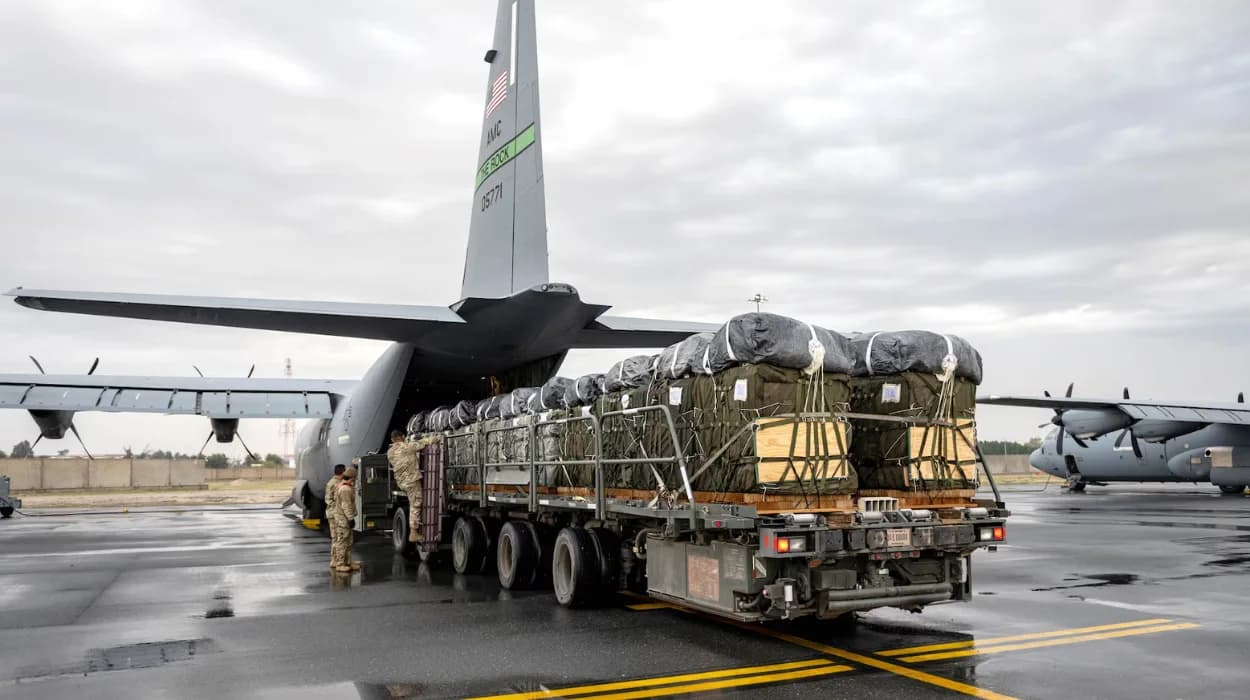The United States’ role in providing humanitarian and
development aid to Gaza has long been a subject of international focus, framed
by a complex geopolitical landscape and humanitarian considerations.
Understanding why the US is sending aid to Gaza involves examining the
intertwined facets of humanitarian need, regional stability, diplomatic
strategy, and long-term peace prospects.
Humanitarian Imperative Behind US Aid to Gaza
Gaza, a densely populated coastal strip home to about two
million people, faces severe humanitarian challenges. According to data from
the United Nations and international organizations, the region suffers from
limited access to basic services such as clean water, electricity, healthcare,
and adequate housing. Chronic conflict, economic blockades, and restrictions
have devastated its infrastructure and economy.
The US government’s interest in sending aid is, first and
foremost, motivated by urgent humanitarian concerns. Aid aims to alleviate the
suffering of civilians affected by conflict, facilitate the rebuilding of
critical infrastructure like hospitals and water systems, and address health
crises exacerbated by limited medical supplies. The World Health Organization
highlights recurring shortages of essential medicines and medical equipment in
Gaza, which pose grave risks to public health.
Promoting Stability and Security in the Region
Beyond addressing immediate needs, US aid to Gaza is also
strategically intended to promote regional stability. The Middle East has long
been a global hotspot for conflict, and Gaza’s instability impacts neighboring
countries, including Israel and Egypt, critical US allies.
Supporting reconstruction and rehabilitation projects
through aid serves to reduce the likelihood of renewed violence by addressing
some root causes of unrest — poverty, unemployment, and lack of opportunities.
The International Monetary Fund and World Bank have underscored that economic
development is a pivotal element for sustainable peace in conflict-affected
areas.
US aid is often linked to broader diplomatic efforts to
reduce hostilities and encourage peaceful dialogue. For instance, recent US
initiatives have pushed for humanitarian corridors and ceasefire arrangements.
These efforts not only save lives but also create openings for political
negotiation.
Aligning With International Efforts and Legal Frameworks
The US channels its aid through international organizations
such as the United Nations Relief and Works Agency (UNRWA), the Red Cross, and
other global partners that operate within Gaza. This multilateral approach
ensures aid delivery respects internationally agreed principles, reduces
duplicity, and maximizes effectiveness.
Aid agreements often incorporate oversight mechanisms to
ensure humanitarian assistance is not diverted for military purposes.
International law, including humanitarian law, guides such operations to
maintain neutrality and protection of civilian populations.
Economic Development and Reconstruction Priorities
A key part of aid deployment emphasizes rebuilding Gaza’s
shattered economy. Infrastructure rehabilitation covering water, sewage,
electricity, and transportation creates jobs and revives essential services.
This economic revitalization is critical because long-term peace requires more
than temporary relief; it needs growth and opportunity.
For example, a special economic zone with preferential trade
terms has been proposed in recent US-backed peace initiatives to stimulate
investment and commerce. This concept draws lessons from successful economic
zones in other parts of the Middle East, fostering entrepreneurship, foreign
investment, and employment.
International agencies like the World Bank advocate for
governance reforms alongside economic measures in Gaza. Transparency, efficient
administration, and anti-corruption measures strengthen institutions that
manage aid and economic resources, ensuring better outcomes for the population.
Humanitarian Aid as Part of a Broader Peace Plan
The US aid to Gaza often aligns with broader diplomatic
proposals aimed at ending hostilities. For instance, the recent US-proposed
Gaza peace plan outlines conditional aid expansion linked to commitments on
demilitarization, governance reform, and transition to a technocratic
administration in Gaza.
This approach ties humanitarian assistance to peacebuilding
benchmarks to encourage compliance from local actors. It envisions a pathway
where aid supports a stable transition, fosters peaceful coexistence, and
builds mechanisms for sustainable governance without direct militant control.
Such plans also highlight the need for an international
stabilization force to help maintain security during transitional phases,
further explaining the US’s interest in supporting multilateral aid and
intervention efforts.
The Role of US Aid in Supporting Palestinians
While Israel remains a key focus of US foreign policy in the
Middle East, the US also recognizes its critical role in supporting humanitarian
and developmental needs of Palestinians in Gaza to promote balance and
fairness.
By providing aid to Gaza, the United States helps address
poverty and hardship among Palestinian civilians, which human rights
organizations argue is essential for any durable peace. Aid
programs frequently target vulnerable groups such as women, children, and
health-compromised populations, seeking to improve education, nutrition, and
social services.
This humanitarian focus complements US diplomatic
objectives, building goodwill and decreasing anti-American sentiment among
populations affected by conflict.
The Challenges and Criticisms of US Aid to Gaza
US aid to Gaza is not without controversy and challenges.
Critics argue that aid can be politicized or diverted, potentially fueling
further conflict if not properly monitored. US legislations have sometimes
placed restrictions on aid to Gaza due to security concerns about extremist
groups' influence.
Additionally, repeated destruction of infrastructure in
cycles of conflict often makes aid temporarily effective but requires
continuous renewal. Balancing security needs with humanitarian responsibilities
remains a persistent challenge.
However, international audits and monitoring frameworks aim
to mitigate these risks, ensuring aid reaches those intended and contributes to
stability and rebuilding.
The United States sends aid
to Gaza primarily due to humanitarian necessity, strategic interest in
regional stability, and its role in facilitating peacebuilding efforts. The aid
is designed to alleviate urgent suffering, reconstruct vital infrastructure,
promote economic development, and underpin diplomatic frameworks that seek a
long-term resolution to conflict.
Collaborating with international organizations, the US ensures aid delivery aligns with global standards and legal guidelines. Although significant obstacles remain in achieving permanent peace, humanitarian and economic aid remain essential components of US policy to stabilize Gaza and prepare the ground for political dialogue.
